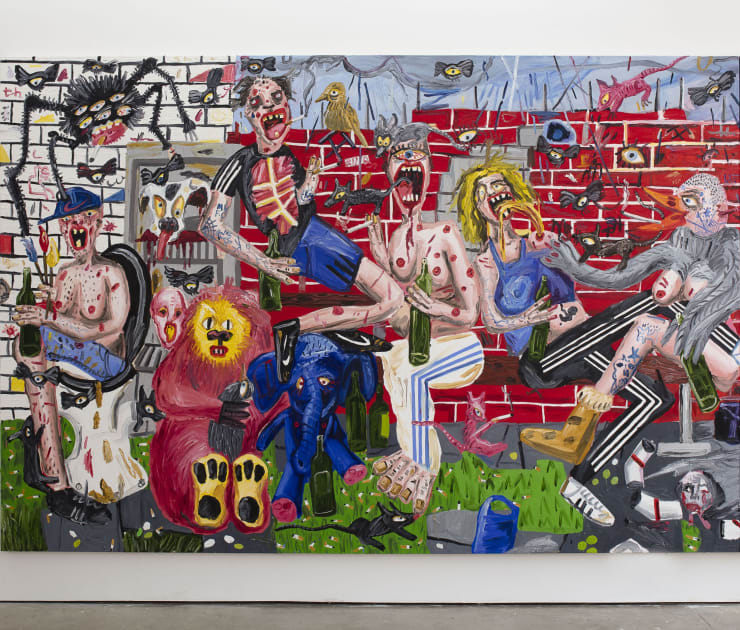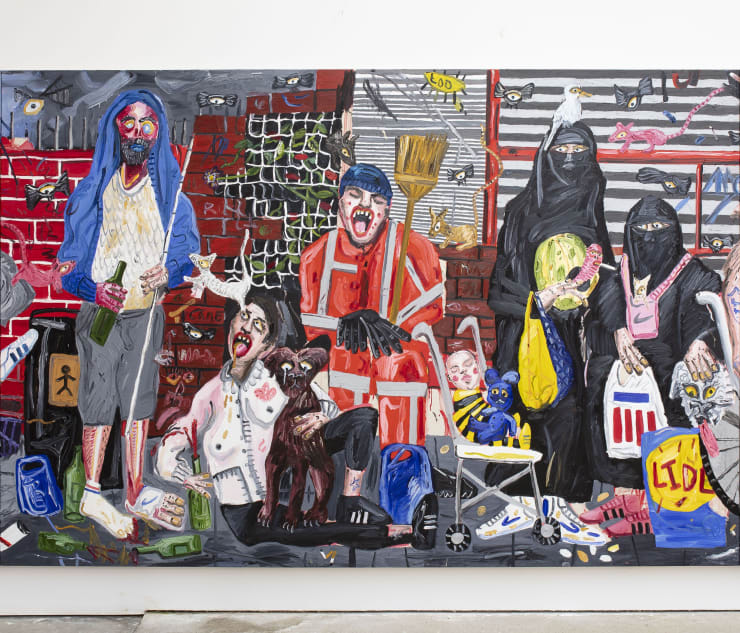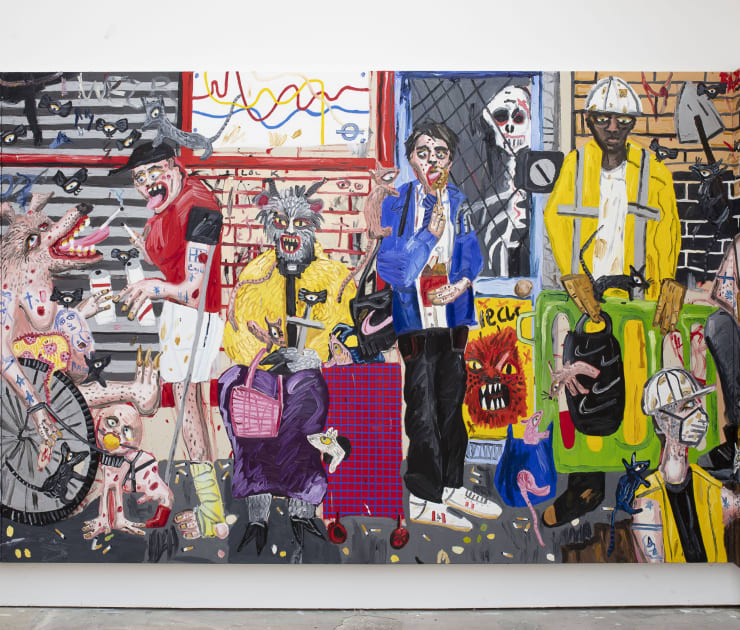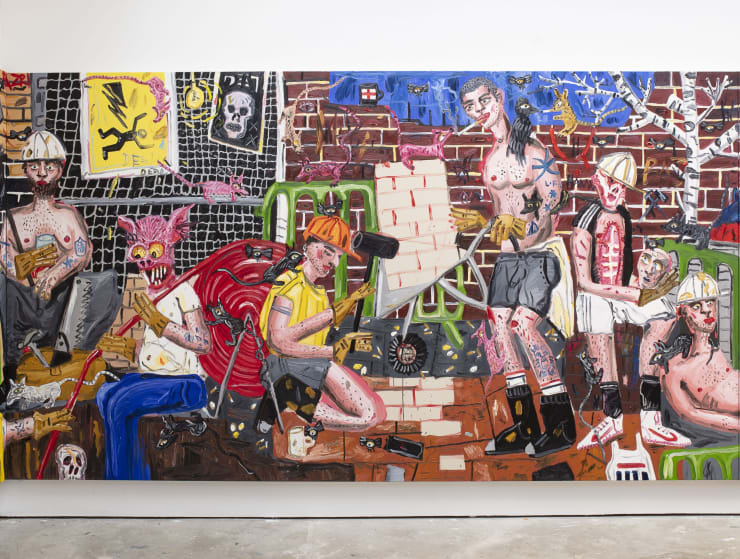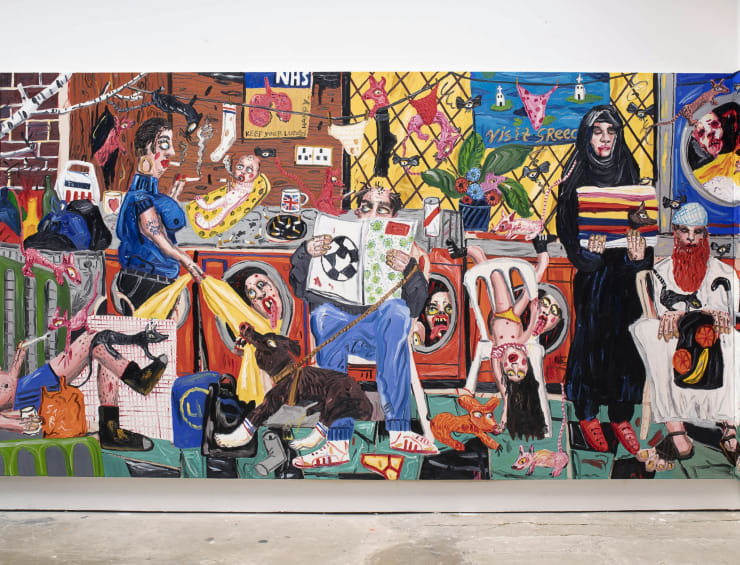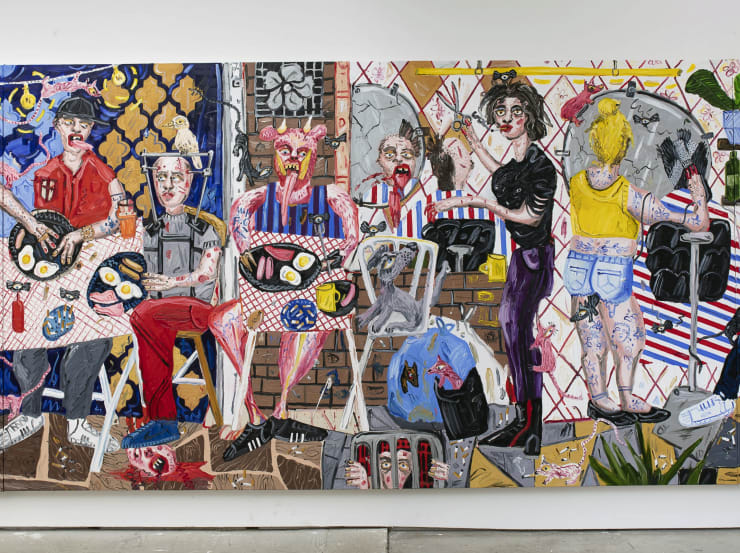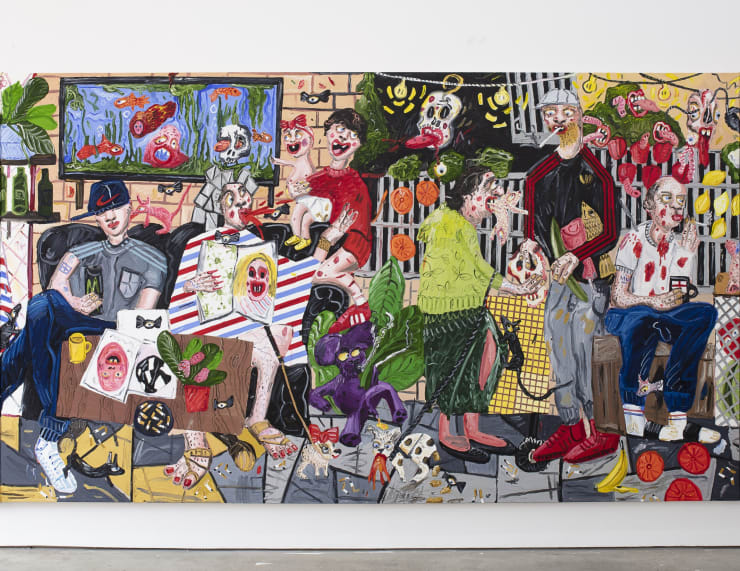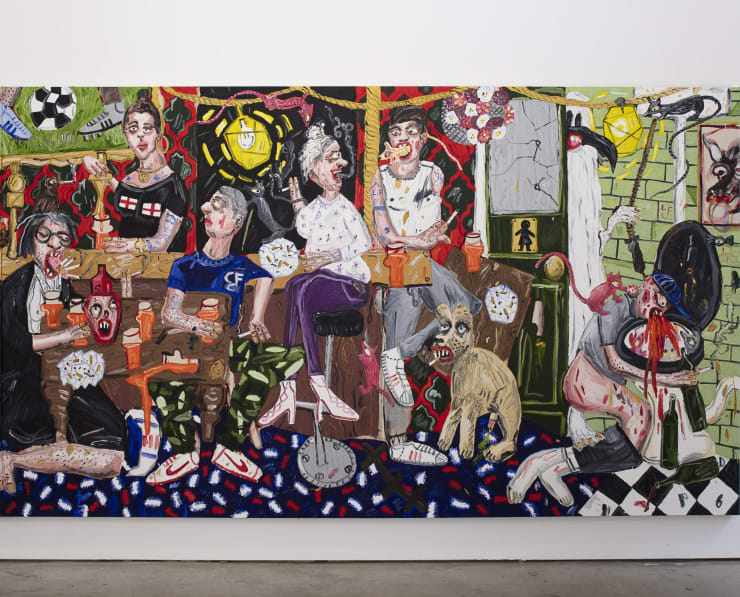Dale Lewis: The Great Day
Edel Assanti is pleased to announce that the gallery will be reopening with Dale Lewis’ third exhibition at Edel Assanti: The Great Day. We are delighted to be reopening, and look forward to welcoming you back to the gallery for socially distanced visits in a safe envrionment.
The Great Day is Lewis’ largest work to date - measuring 33 metres in length, the work will wrap around the full perimeter of the gallery. Reading from left to right, the work depicts a continuous linear narrative, recalling the pictorial systems of medieval tapestries and ancient hieroglyphs. The painting borrows its title from one of the first films that Alfred Hitchcock worked on in 1920. Whilst the title conjures a narrative as spectacular as the scale of the painting itself, the events it depicts embody the banality, melancholy and intensity of everyday inner-city London life.
The painting follows the artist’s walk to and from his studio in Bow on any given day. It begins at Lewis’ flat in an ungentrified area of Leytonstone, a few doors from Hitchcock’s childhood home. We see the artist on the toilet, cigarettes and brushes in-hand contemplating a day of painting ahead. The narrative unfolds onto the street outside the flat: garbage litters an alleyway inhabited by the ominous alcoholics Lewis crosses paths with each day. The artist’s route continues past a Wetherspoons pub where he often stops for breakfast, and scene by scene, progresses past a bus stop, laundrette, barbershop, meat market, until finally – in an allegory for the exhaustion following the completion of his monumental project – the story closes on a collapsing Lewis in a pub toilet cubicle.
Whilst compositionally Lewis’ work is often informed by compositional structures from Renaissance paintings, in its grotesque yet tender depictions of urban society’s underbelly, The Great Day partakes in a British tradition of social realism. The timeless scenes of the painting permit defining conversations of our era to seep through their cracks, traversing themes of national identity, multiculturalism, 9-5 jobs, mental health, religion, class and wealth divides. In Lewis’ hands, the ordinary is rendered extraordinary through humorous and grotesque cameos: mice share a diner’s fried eggs whilst a baby casually puffs on a cigarette under a chair; the barber scissors off a punter’s tongue; decapitated heads bounce around the wheels of spinning washing machines.
Whereas in previous works large areas of the canvas’ surface were left raw and intentionally underworked, here Lewis’ compositions are densely layered with generous applications of paint that reveal the artist’s lyrical, gestural approach to a tightly organised picture plane. The hallucinant atmosphere of Lewis’ compositions is born from his practice of creating work from memories of real experiences and witnessed events. The orgiastic scenes cannot neatly be described as inside or outside, daytime or night, but they are enhanced by the collapsing of depth of field into a flat plane, where characters, objects and scenes all compete for volume.
Whilst The Great Day was conceived one year before the period defined by Covid-19, the subject matter of Lewis’ monumental work feels all the more prescient today. The painting provides full immersion in the suffocation of London life and its protagonists, inducing concurrent feelings of claustrophobia and isolation. In Lewis’ words, the outcome of “having sex, drugs and alcohol on tap – never treading on a piece of grass, an endless waking nightmare of sirens and screams.”
The exhibition is accompanied by an essay by Daniel Culpan.
Dale Lewis completed a BA in Fine Art at London Guildhall in 2002, an MFA at Brighton in 2006 and graduated the Turps Studio Programme in 2015. In autumn 2020 Lewis will have a solo exhibition at Block336, London, and his work will be included in an upcoming exhibition at the Schlossmuseum, Linz. Recent solo exhibitions include Free Range at Nino Mier Gallery, LA (2019); Fat, Sugar, Salt, Edel Assanti, London (2018). He was the recipient of the 2016 Jerwood Painting Fellowship, and completed the Zabludowicz Residency in New York City in 2017 and the Arsenal Residency in Montreal in 2018. Lewis’ work features in international collections including the David Roberts Art Foundation, Zabludowicz Collection and the Arsenal. Lewis lives and works in London.
-

Dale Lewis, The Great Day (Panel 1), 2020
-

Dale Lewis, The Great Day (Panel 2), 2020
-

Dale Lewis, The Great Day (Panel 3), 2020
-

Dale Lewis, The Great Day (Panel 4), 2020
-

Dale Lewis, The Great Day (Panel 5), 2020
-

Dale Lewis, The Great Day (Panel 6), 2020
-

Dale Lewis, The Great Day (Panel 7), 2020
-

Dale Lewis, The Great Day (Panel 8), 2020
-

Dale Lewis, The Great Day (Panel 9), 2020
-

Dale Lewis, The Great Day (Panel 10), 2020
-
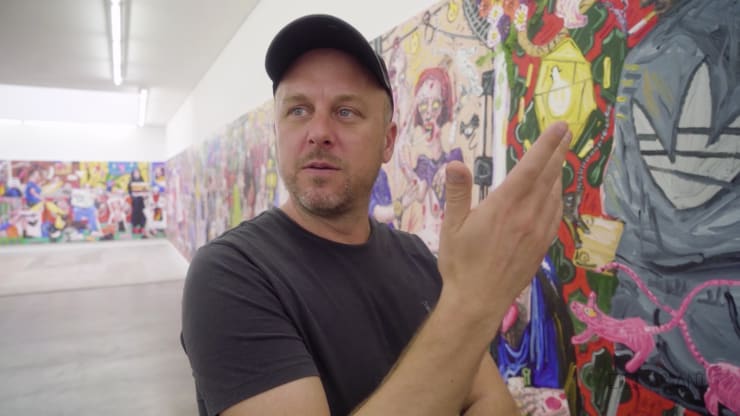
Dale Lewis | The Great Day
24 September 2020 Edel Assanti is pleased to present a short documentary film on the subject of Dale Lewis' monumental painting The Great Day. The...Read more -
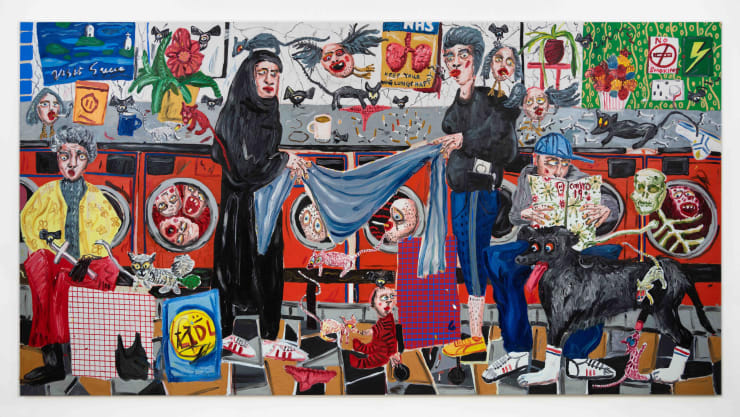
Dale Lewis in Apollo Magazine
'Around the galleries in London' by Gabrielle Schwarz09 July 2020 Summer is not usually an auspicious time for visiting galleries. Many are closed altogether – taking the opportunity to reorganise stock, repaint...Read more


